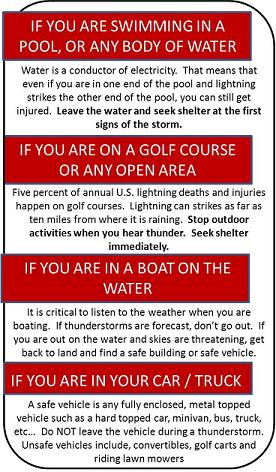The forecast this time of year often calls for partly sunny skies and scattered afternoon thunderstorms. Warm air rising from the hot ground can cause the atmosphere to become unstable and thunderstorms to form. A passing cold front or approaching storm system can also trigger thunderstorms.
At any given moment, there are roughly 2,000 thunderstorms in progress around the world. An average thunderstorm is 15 miles in diameter and lasts around 30 minutes. Sometimes these are quick downpours. However, a small percentage of thunderstorms are severe, meaning they contain hail threee-fourths of an inch in diameter, frequent lightning strikes and winds 58 mph or stronger.
If conditions are favorable for severe thunderstorms to form, the National Weather Service will issue a severe thunderstorm watch. If this type of dangerous storm is spotted on radarand is imminent, then a severe thunderstorm warning is issued. A warning is more serious than a watch. However, whenever you hear the roar of thunder, seek shelter immediately. Do not wait until you see a flash of lightning.
Wide open space can be dangerous places because shelter can be far away. According to the National Lightning Safety Institute, about 5 percent of lightning deaths in the U.S. annually occur on golf courses.
What should you do if you’re caught outdoors, and a severe thunderstorm is bearing-down on the area? It all depends on where you are – and how quickly you can get someplace else.




